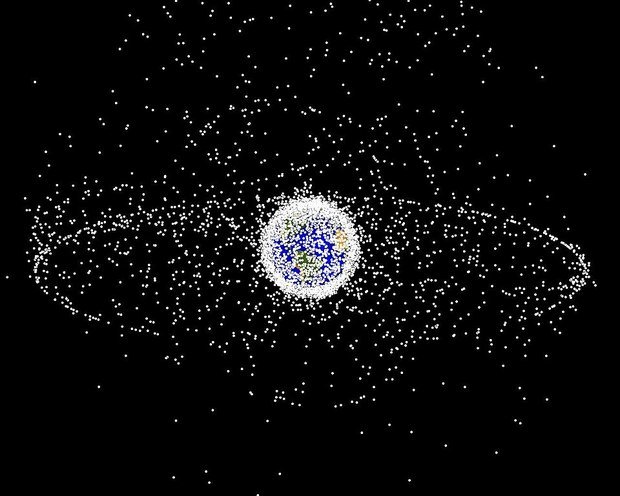Roscosmos working on solution to clean Earth orbit
The agency considers building a ''laser cannon'' to evaporate space junk
As more countries take part in space exploration, the problem of space junk becomes increasingly significant. Even a small object in the Earth orbit can cause a damage of a spacecraft or a satellite in case of a collision. The Russian space agency suggests creating a ''laser cannon'' that will be able to vaporise space debris.
Russian researchers have revealed that they are planning to build a gigantic laser cannon that will be used to target and shoot down the space debris cluttering around Earth, reports The Space News. A corresponding report was submitted to the Russian Academy of Sciences by a research team of the Scientific and Industrial Corporation Precision Instrument Systems, which is a sub-division of Russian space agency Roscosmos. If the project is approved, the scientists intend to convert a soon-to-be-built telescope at the Altay Optical-Laser Centre, some 45 miles (70 km) from the border with Kazakhstan, into a 3-metre-long laser cannon.
According to the report, the research team will install a transmit/receive adaptive optic detection system into the cannon. The weapon will use the laser ablation process to shoot down any unwanted orbiting space junk. It will heat up the space debris with a beam, vaporize it and finally evaporate it. ''The device is expected to be powered by a solid-state generator, though the project team has yet to choose which model to use,'' says the document.

NASA estimates the amount of space debris in Earth orbit at about 500,000 pieces. Around 20,000 of them are larger than the size of a softball, which is big enough to pose a threat to the orbiting spacecraft or satellites. These objects are travelling at speeds up to 17,500 miles (over 28,000 km) per hour. The amount of debris continues to increase, as more and more nations travel into space. The accumulation of space debris is indeed a growing threat that needs immediate attention, believe the scientists.
Other countries are also working on solutions to an increased amount of junk in low Earth orbit. In January 2018, China announced its plans to use lasers to fight space junk. Besides, an experimental spacecraft called RemoveDEBRIS arrived at the International Space Station earlier this year. The device was designed by researchers from the University of Surrey to test various methods to clear space junk using net capture, visual capture and harpoon capture. ''We believe the technologies we will be demonstrating with RemoveDEBRIS could provide feasible answers to the space junk problem — answers that could be used on future space missions in the very near future,'' said Guglielmo Aglietti, director of the Surrey Space Centre at the University of Surrey.